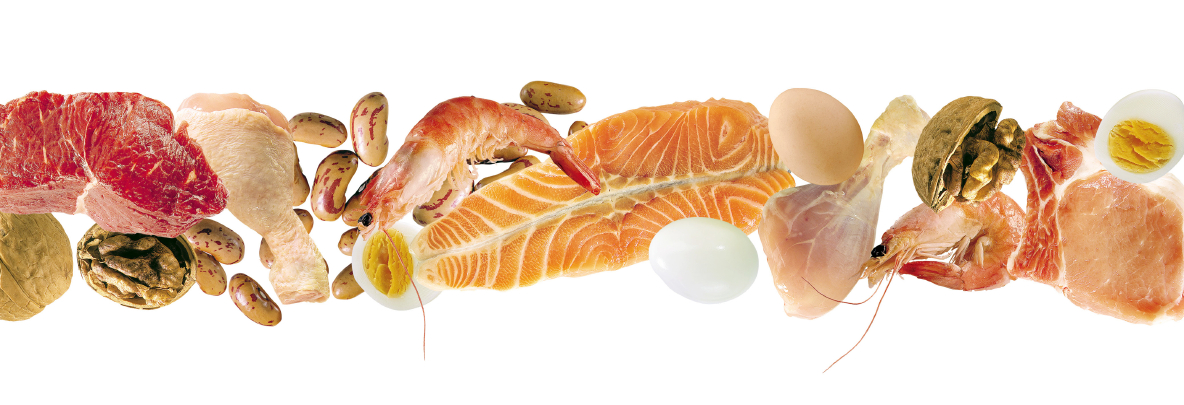Why is protein important?
Protein is one of the three macronutrients, types of foods we need in large amounts, alongside fat and carbohydrates, in order to maintain a healthy diet. Protein helps our body repair itself and build muscle. Foods from the protein food group are also usually a good source of iron which is necessary for red blood cell development. According to the 2015 Dietary Guidelines for Americans, protein foods include meat, poultry, eggs, seafood, beans and peas (AKA legumes), soy products, nuts and seeds. Protein intake recommendations are based on age, gender, and activity level but the average recommendation for school-aged children is between 4-5 ounce equivalents each day. Most Americans get plenty of protein, but our choices may also contain excess calories and fat.
School lunches under the National School Lunch Program must meet meal pattern and nutrition standards based on the latest Dietary Guidelines for Americans. Daily and weekly requirements for lunch are:
- 2 oz. eq. daily for students in grades 9-12, 10-12 oz. eq. max/week
- 1 oz. eq. daily for younger students, 8-10 oz. eq. max/week
- A variety of meat/meat alternates is encouraged
- Tofu and soy yogurt are allowable as meat alternatives
Why lean protein?
Many meat-based proteins are high in saturated fat, which has been linked to heart disease and obesity. Looking for lower fat sources of protein will ensure that our body’s repair system is working optimally while helping to ensure that we remain within healthy limits for total fat and calories. There are a wide variety of lean proteins out there, including plant-based proteins. Protein from plants have the added benefit of fiber, which is not found in meat.
Examples of lean protein:
- Skinless chicken or turkey
- Seafood (includes shellfish, finfish, and mollusks)
- Beans and other legumes (dried or canned)
- Soybeans
- Tofu
- Quinoa
- Low-fat dairy
Recommendations:
- Aim for at least 8 ounce-equivalents of seafood each week
- One-half ounce of nuts or seeds counts as 1 ounce-equivalent of protein foods, and because they are high in calories, they should be eaten in small portions and used to replace other protein foods rather than being added to the diet. They should alsobe unsalted
- Try replacing one traditional dinner entree with a meatless version once a week
- Look for cuts of meat with the words “loin” or “round” in the name, which are from less fatty parts of the animal
- Remove the skin and trim excess fat before cooking meats
- Choose ground beef that is at least 90% lean
- Drain the fat from ground meats after cooking
- Use low-fat cooking techniques such as grilling, broiling, poaching, or roasting, to avoid excess fat when preparing foods
- Look for lower-fat alternatives to some meats (e.g. turkey bacon, chicken sausage) and/or save high-fat options for occasional choices, not everyday foods
Contributor
April Neujean, Cornell Cooperative Extension of Jefferson County
Sources
National School Lunch Program NSLP Requirements for 2015-2016

